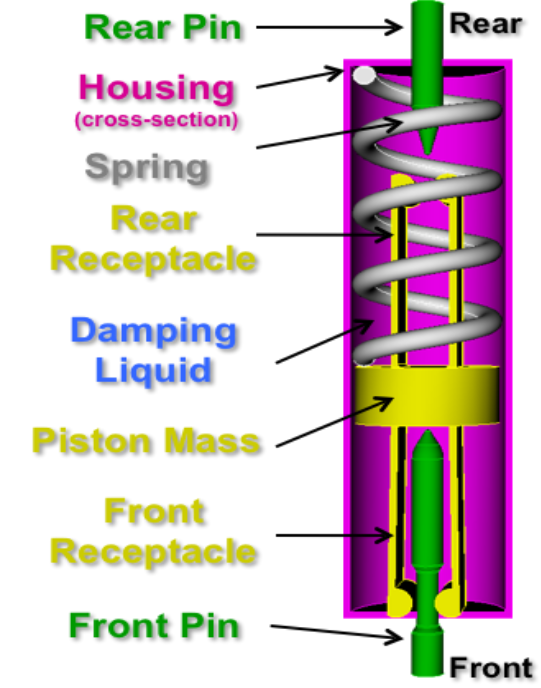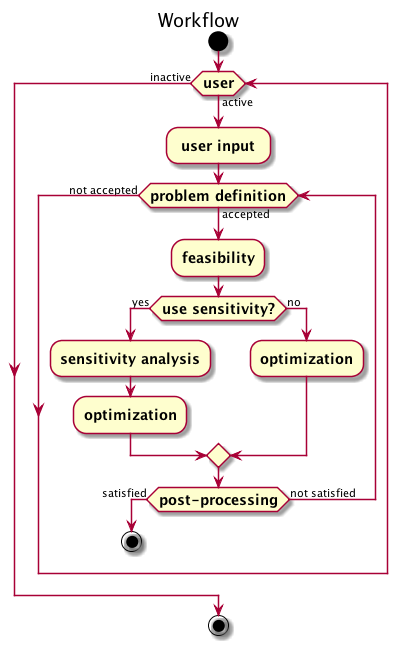Offline-Enhanced Reduced Basis Method through adaptive construction of the Surrogate Parameter Domain
The Reduced Basis Method (RBM) is a popular certified model reduction approach for solving parametrized partial differential equations. However, the large size or high dimension of the parameter domain leads to prohibitively high computational costs in the offline stage. In this work we propose and test effective strategies to mitigate this difficulty by performing greedy algorithms on surrogate parameter domains that are adaptively constructed. We propose two ways to construct the surrogate parameter domain, Successive Maximization Method RBM (SMM-RBM) inspired by inverse transform sampling for non-standard univariate probability distributions and Cholesky Decomposition RBM (CD-RBM) based on the Cholesky Decomposition of an error correlation matrix. These algorithms are capable of speeding up RBM by effectively alleviating the computational burden in offline stage without degrading accuracy, assuming that the solution manifold has low Kolmogorov width.


 A Goal-Oriented Reduced Basis Methods-Accelerated Generalized Polynomial Chaos Algorithm
The non-intrusive generalized Polynomial Chaos (gPC) method is a popular computational approach for solving partial differential equations (PDEs) with random inputs. The main hurdle preventing its efficient direct application for high-dimensional input parameters is that the size of many parametric sampling meshes grows exponentially in the number of inputs (the "curse of dimensionality"). We design a weighted version of the reduced basis method (RBM) for use in the non-intrusive gPC framework. We construct an RBM surrogate that can rigorously achieve a user-prescribed error tolerance, and ultimately is used to more efficiently compute a gPC approximation non-intrusively. The algorithm is capable of speeding up traditional non-intrusive gPC methods by orders of magnitude without degrading accuracy, assuming that the solution manifold has low Kolmogorov width.
A Goal-Oriented Reduced Basis Methods-Accelerated Generalized Polynomial Chaos Algorithm
The non-intrusive generalized Polynomial Chaos (gPC) method is a popular computational approach for solving partial differential equations (PDEs) with random inputs. The main hurdle preventing its efficient direct application for high-dimensional input parameters is that the size of many parametric sampling meshes grows exponentially in the number of inputs (the "curse of dimensionality"). We design a weighted version of the reduced basis method (RBM) for use in the non-intrusive gPC framework. We construct an RBM surrogate that can rigorously achieve a user-prescribed error tolerance, and ultimately is used to more efficiently compute a gPC approximation non-intrusively. The algorithm is capable of speeding up traditional non-intrusive gPC methods by orders of magnitude without degrading accuracy, assuming that the solution manifold has low Kolmogorov width.
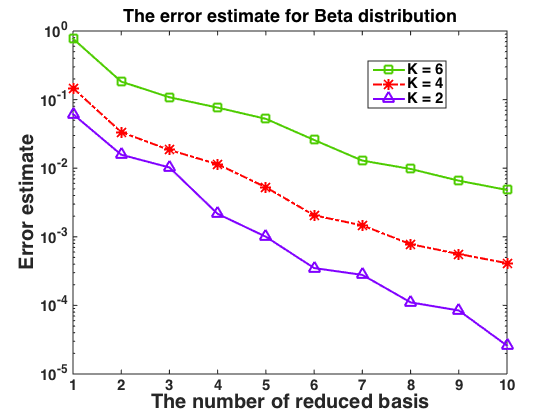
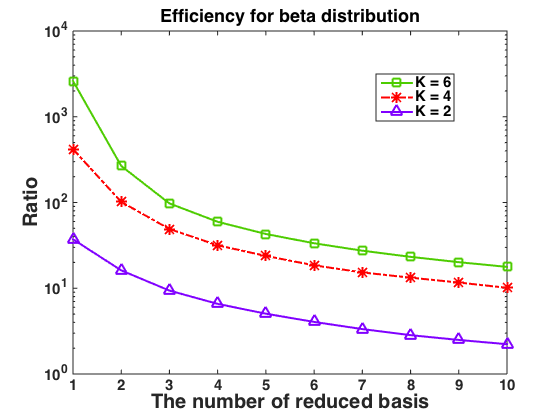
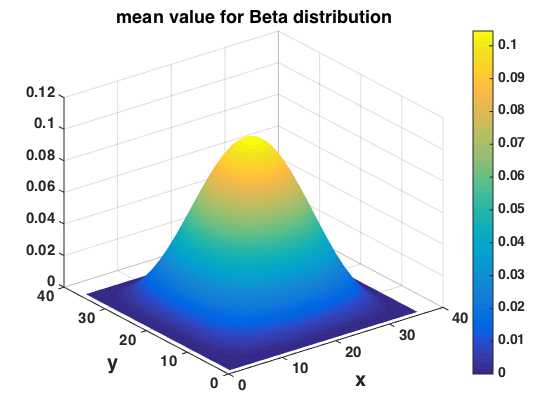
(K is the dimension of the parameter)
Acceleration strategies for Uncertainty Propagation via Overlapping Domain Decomposition
This work proposes several methods for accelerating convergence of (overlapping) domain-decomposition strategies for uncertainty quantification (DDUQ). The DDUQ methodology employs classical iterative methods (i.e. Jacobi, Gauss-Seidel, Successive Over-Relaxation) to propagate uncertainties in (potentially large-scale) networks of interconnected subsystems. While this "divide-and-conquer" methodology is scalable, respects subdomain independence, and can be readily applied to multidisciplinary systems, its convergence can be slow when the network becomes large. This effect is not unique to DDUQ; it is commonly observed when applying classical iterative methods to solving partial differential equations, for example. To this end, we propose adapting acceleration methods that have been developed for classical iterative methods to the DDUQ case. First, we investigate Anderson Acceleration (AA) as an approach to accelerate convergence. Second, we develop DDUQ analogues to h- and p-multigrid. Finally, we combine the two approaches in a hybridized AA-multigrid fashion. Numerical experiments demonstrate that the proposed techniques can accelerate convergence by orders of magnitude, an effect which is especially pronounced for large-scale networks.
A Flexible Methodology for Optimal Helical Compression Spring Design
The helical compression spring is one of the most commonly used mechanical components. As a result, spring design is a commonly performed task in industry and would benefit from the development of flexible tools that can answer the question of what makes a spring design optimal. To address this, we develop an
intelligent supporting tool using an object-oriented design framework that provides users the robustness needed
to define and solve any spring design problem they require. In addition to our tool interfacing with a graphic
user interface, we supplement its flexibility with analytic tools. One such tool provides global sensitivity
analysis, and another provides a feasibility plot which helps the user determine if their problem has a solution
or if it should be redefined. We also include a model for stress relaxation, which is a novel inclusion in the list of considerations for spring specifications. Both its unique flexibility and capability and the analytic tools we provide to support it make our tool useful in defining, solving, and analyzing optimal spring design problems.
